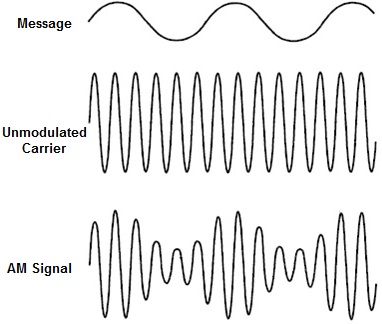Introduction
Amplitude Modulation is a technique used in electronics communication for transmitting information via a carrier wave. It works by varying the strength of the transmitted signal in relation to the information being sent.
Modulation is the process whereby some characteristics of one wave is varied in accordance with characteristics of another wave. In other words we can say that modulation is the process of mixing or addition of information signal with an electronic or optical carrier.
The sinusoidal signal that is used in the modulation is known as carrier signal or carrier. A carrier wave or carrier is a waveform that is modulated with an input signal for the purpose of conveying information. This carrier wave is usually a much higher frequency.
A signal is a real or complex valued function of one or more real variables. A signal is an electric current or electromagnetic field used to convey data, gesture, action or sound from one place to another place. The signal is said to be one dimensional.
Here the mathematical model that defines the AM signal is
 |







